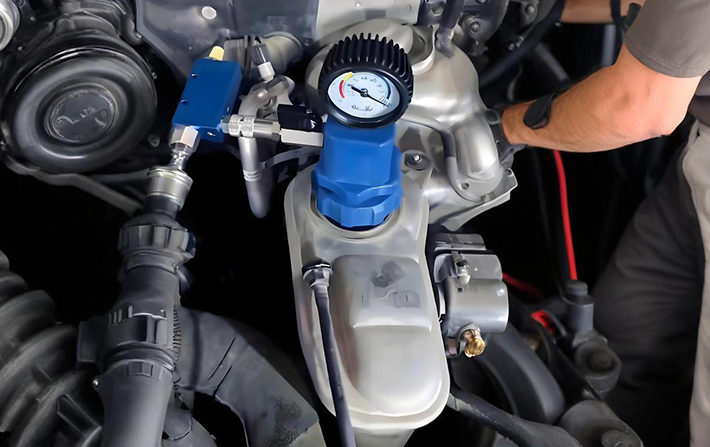Effects of Air in a Car Cooling System.
2025-05-07
The automotive cooling system is a critical mechanism for maintaining normal engine operation. Its primary function is to circulate coolant to dissipate engine heat. When air infiltrates the cooling system, this seemingly minor issue can trigger a chain of malfunctions, potentially leading to severe mechanical failures. Below is a detailed analysis of the impacts and underlying mechanisms of air entering the cooling system.

Drastic Decline in Cooling Efficiency
Air in the cooling system disrupts coolant circulation due to its compressibility, far exceeding that of liquids. Air pockets (commonly called "airlocks") can cause:
1. Localized Flow Blockage: Air trapped at high points or narrow sections of coolant passages (e.g., complex heater core lines in certain models) halts proper fluid circulation.
2. Impaired Heat Transfer: Bubbles in engine water jackets block coolant contact with hot metal surfaces, causing localized temperature spikes. Experimental data shows that a 1 cm³ air pocket can reduce heat dissipation by over 30% in affected areas.
3. Water Pump Cavitation: Modern centrifugal water pumps rely on liquid to transfer energy. Air in the impeller zone reduces pump efficiency and may overheat seals, leading to failure.
Abnormal Temperature Fluctuations
Air-contaminated systems exhibit erratic thermal behavior:
Erratic Temperature Gauge Readings: Air bubbles near the coolant temperature sensor cause ECU-received signals to fluctuate abnormally (e.g., 60–100°C swings).
False Overheating Alerts: Air pockets near cylinder head passages may trick sensors into triggering false alarms.
Hidden Overheating Risks: Conversely, air blocking sensors can mask actual overheating, allowing engine damage without warnings.
Accelerated Corrosion
Oxygen in air reacts with coolant corrosion inhibitors, causing:
1. Metal Component Degradation: Aluminum engine blocks and copper radiators corrode 5–8 times faster in oxygen-rich environments. Persistent air exposure may cause radiator leaks within 3 years.
2. Coolant Breakdown: Oxidized ethylene glycol-based coolant forms acidic compounds, reducing freeze/boil protection and creating sludge that clogs narrow passages.
Water Pump Cavitation Damage
Bubble implosions in high-pressure pump zones (cavitation) generate destructive forces:
Impeller Pitting: Micro-jet impacts create pockmarks on pump surfaces, progressively reducing efficiency.
Increased Vibration: Cavitation-induced vibrations accelerate bearing wear. Studies show pumps with air contamination fail 40% sooner on average.
Winter-Specific Hazards
Cold weather exacerbates air-related risks:
Localized Freezing: Static air pockets lacking antifreeze protection may freeze, expanding and cracking plastic fittings or aluminum components.
Heater System Failure: Air in the heater core reduces cabin heating efficiency by over 70%, severely impacting comfort.
Solutions
1. Proper Bleeding Procedures: Follow manufacturer protocols (e.g., using dedicated bleed screws like those on VW EA888 engines) with the engine running.
2. Diagnostic Tools: Professional pressure monitoring (normal systems show <0.3 bar fluctuations) identifies trapped air.
3. Scheduled Maintenance: Use vacuum fillers during coolant replacement (every 2 years or 40,000 km) for complete air removal.
Summary
Air in a cooling system acts like a blood clot in the vascular system—seemingly small but potentially catastrophic. Monitor coolant reservoir levels (normal thermal expansion should stay within 1/3 of marked ranges). Address abnormal temperature readings or weak cabin heat promptly to prevent engine damage. Maintaining an air-free cooling system is essential for engine longevity.